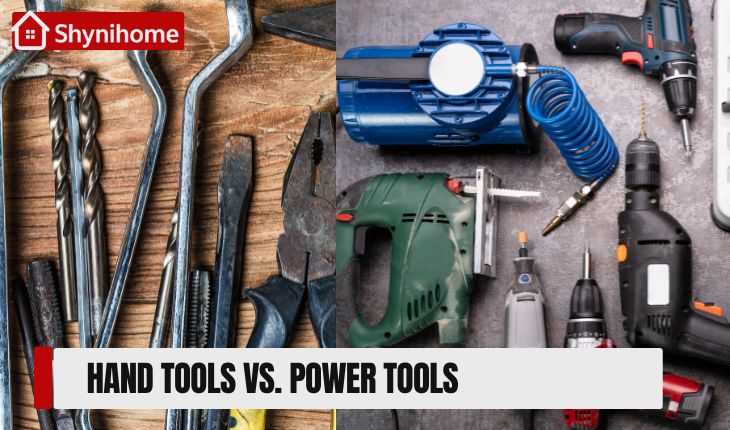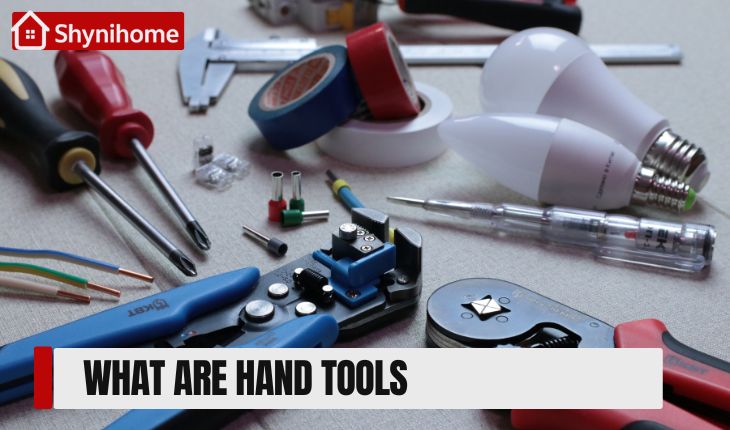
When it comes to DIY and home improvement, choosing between hand tools and power tools can make a big difference in your results.
Both types of tools have their own advantages, and knowing when to use each can save you time, effort, and even money.
Table of Contents
Toggle🛠️ What Are Hand Tools?

Hand tools are non-powered tools operated manually. These include hammers, screwdrivers, pliers, wrenches, and saws. They’re simple, reliable, and often more affordable.
✅ Benefits of Hand Tools:
- Better Control: Ideal for detailed or delicate tasks.
- No Electricity Needed: Use them anywhere, anytime.
- Safer for Beginners: Less risk of injury with proper use.
- Durable and Low Maintenance: With proper care, hand tools can last decades.
🔧 Best Uses for Hand Tools:
- Hanging pictures or shelves
- Assembling furniture
- Tightening bolts and screws
- Light woodworking
- Precision tasks
⚡ What Are Power Tools?

Power tools are electric- or battery-powered tools that do the work for you. Common examples are drills, electric saws, sanders, and nail guns.
✅ Benefits of Power Tools:
- Speed and Efficiency: Complete tasks much faster.
- Tackle Tough Jobs: Great for drilling, cutting, or sanding hard materials.
- Precision in Bulk Work: Ideal for large-scale or repetitive tasks.
👉 Also Read: Beginner’s Drill Guide: Pick the Perfect Drill for Home Use
🔌 Best Uses for Power Tools:
- Building furniture
- Installing drywall or cabinets
- Cutting wood, metal, or plastic
- Sanding large surfaces
- Heavy-duty home repairs
⚖️ Hand Tools vs. Power Tools: When to Use Each
| Task | Best Tool Type | Why |
|---|---|---|
| Hanging a frame | Hand Tool | Simple, requires control |
| Assembling IKEA furniture | Hand Tool | Low force, manual screws |
| Drilling into concrete | Power Tool | Requires power and speed |
| Sanding a table | Power Tool | Covers large area quickly |
| Tightening a bicycle bolt | Hand Tool | Precision and torque control |
| Cutting wood planks | Power Tool | Faster and smoother cuts |
🧰 Pro Tips for DIYers
- Start with Hand Tools: If you’re a beginner, learn the basics with manual tools first.
- Invest Wisely: Buy essential power tools as needed—don’t overspend on tools you’ll rarely use.
- Safety First: Always wear safety gear and follow user manuals, especially when using power tools.
👉 Also Read: DIY Tools 101: A Beginner’s Guide to Home Improvement
Conclusion
Both hand tools and power tools are essential in a DIYer’s toolbox. Hand tools offer control and simplicity, while power tools bring speed and strength.
Knowing what to use and when can take your home improvement skills to the next level.
